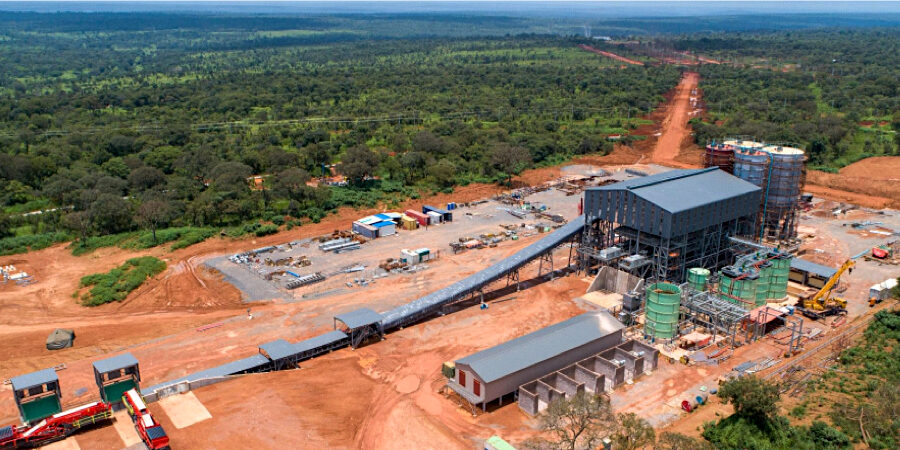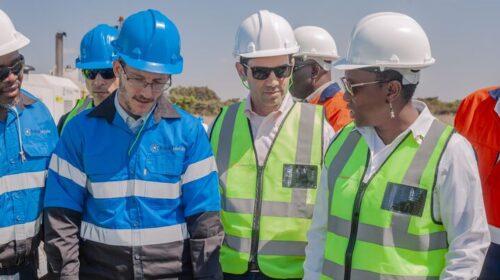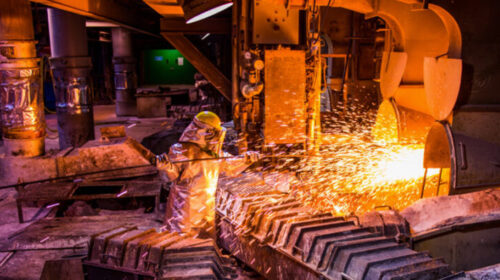Clean, green copper to be produced at Kamoa’s hydropowered DRC operation
Clean, green copper is said to be produced at the Kamoa Copper operation in the Democratic Republic of Congo (DRC), where the Ivanhoe Mines-Zijin operation has secured clean, renewable hydro-generated electricity.
“The upgrade of the Mwadingusha hydropower plant has been very successful. The facility will provide clean hydro-generated electricity to local communities as well as to Kamoa Copper,” the company said.
Securing sustainable, long-term electricity is essential in the development of Kamoa Copper, the first phase concentrator of which is now fully operational. A total of 338 000 t grading 4.59% copper was mined in June and Kamoa Copper’s pre-production surface stockpiles now contain 3.4-million tonnes of high-grade and medium-grade ore at an estimated, blended average of 4.78% copper.
Offtake agreements for copper concentrate and blister copper have been signed with CITIC Metal and Zijin-subsidiary Gold Mountains International Mining for 50% each of the copper products from Kamoa’s Kakula first phase production. Authorisation to export copper products from the Kamoa-Kakula mine to international markets has also been secured.
To support the continued successful performance of its mining complex, Kamoa signed a public-private partnership with DRC’s State-owned power company La Société Nationale d’Electricité (SNEL) to secure the hydropower.
Kamoa Copper’s power allocation, based on the works undertaken at Mwadingusha, is enough for the first phase, as well as the second phase, which is expected to be completed in 2022.
In April 2021, Kamoa Copper extended its agreement with SNEL to include the upgrading of Turbine 5 at the Inga II hydropower complex, which will provide additional power for future expansions of the mine.
The Mwadingusha hydro power plant is located on the Lufira river, about 80 km from Likasi town, in the Haut Katanga province, and about 320 km from Kamoa-Kakula.
The first unit/turbine started working by 1930 with works performed from 1921 to 1936 for six turbines and dam, studies included.
The first construction was conducted by the Belgians under the Union Minière du Haut Katanga (former Gécamines), then all assets transferred to SNEL during 1972.
Rehabilitation works with Ivanhoe Mines started early in 2017 with the modernisation of all the six units/turbines, penstocks and water intake equipment with state-of-the-art control and instrumentation.
Kamoa has invested $140-million in Mwadingusha and national power transmission infrastructure, by way of a loan that will be repaid through a discount on the power tariff.
Initially, the Mwadingusha hydropower was providing six sets of 12 MW each, totalling 72 MW. After the refurbishment and an upgrading the Mwadingusha hydropower plant will be providing six sets of 13 MW totalling 78 MW of hydropower at full capacity to the national electric grid, and will supply Kamoa for the first two phases of production.
Once upgraded, the Inga II hydropower plant is expected to produce 162 MW of renewable hydropower.
Together, these two hydropower plants will provide Kamoa with access to a combined 240 MW of clean, renewable electricity.
![]()





